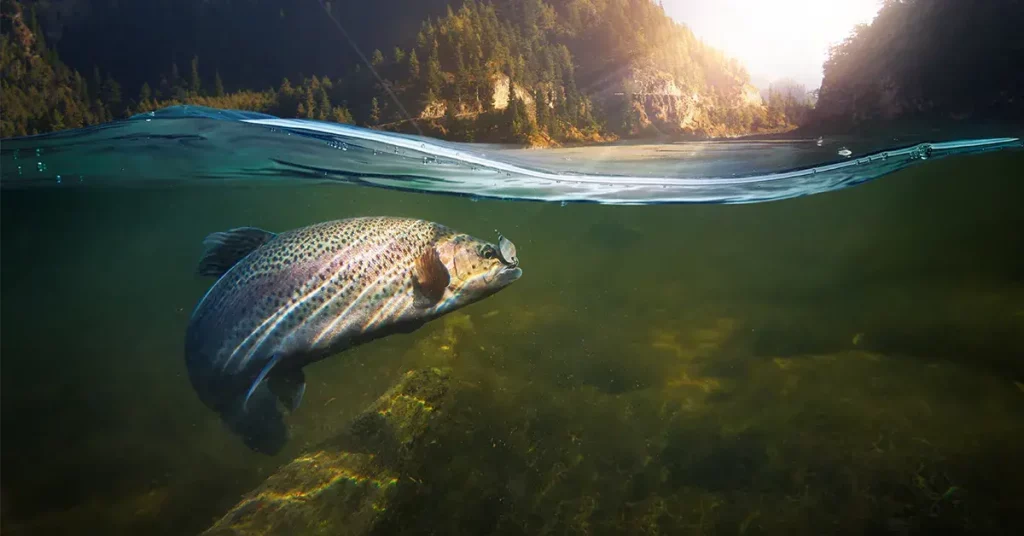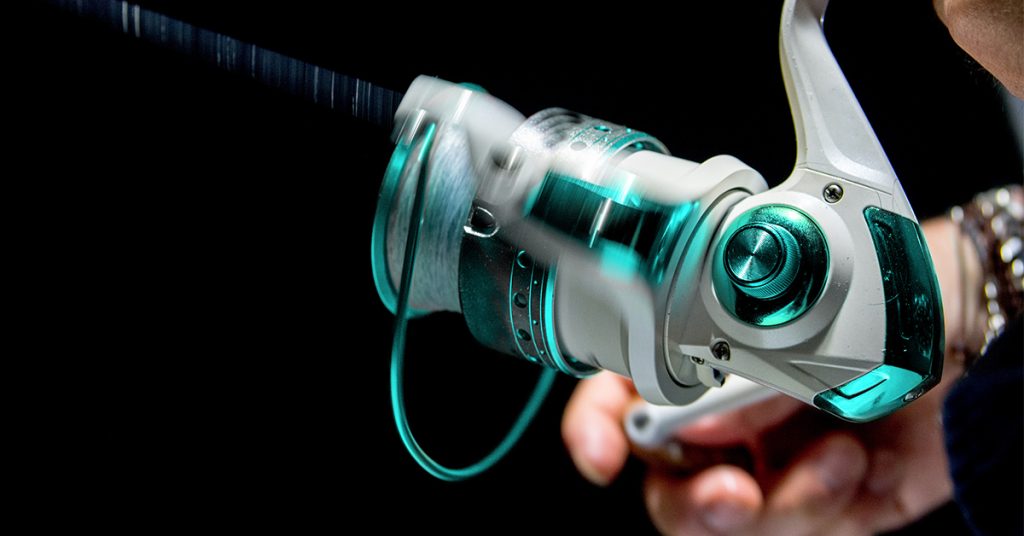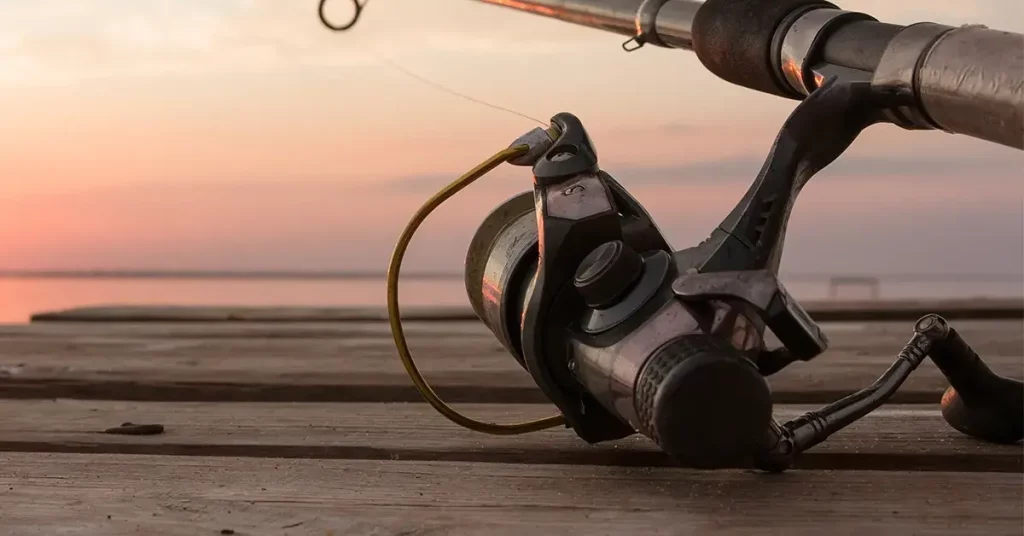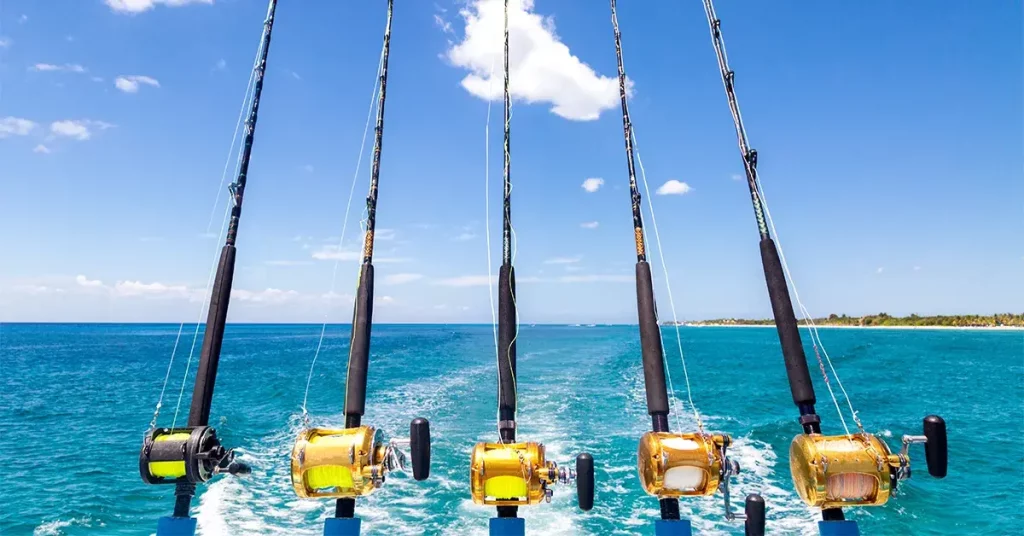No one wants to get caught in a real survival scenario, but the reality is it can happen to any of us. Your vehicle could break down in a remote location, you could be involved in a plane crash, or a natural disaster could strike unexpectedly. If you want to increase your odds of survival, then proper preparation is the key to success – enter survival fishing.
One of the most important keys to survival is securing a decent source of food. There are multiple ways of accomplishing this, but if you find yourself close to a decent-sized body of water, then catching fish is one of your best options. In North America, with its abundant lakes, ponds, streams, creeks, and rivers, catching fish is going to be one of the best sources of nutritious wild food.
Survival fishing is a little different from your typical recreational rod and reel fishing. The techniques and methods used are less about catching a single fish at a time, and more about scoring the maximum quantity of fish with the least amount of time and effort.
Keep in mind that in a true survival fishing scenario you’ll need to use whatever methods mare most effective, and adhering to fish and game regulations go out the window. Obviously, you should only use these methods if you’re truly stranded; otherwise, make sure you follow local wildlife laws and regulations.
How to Survival Fish with Gear
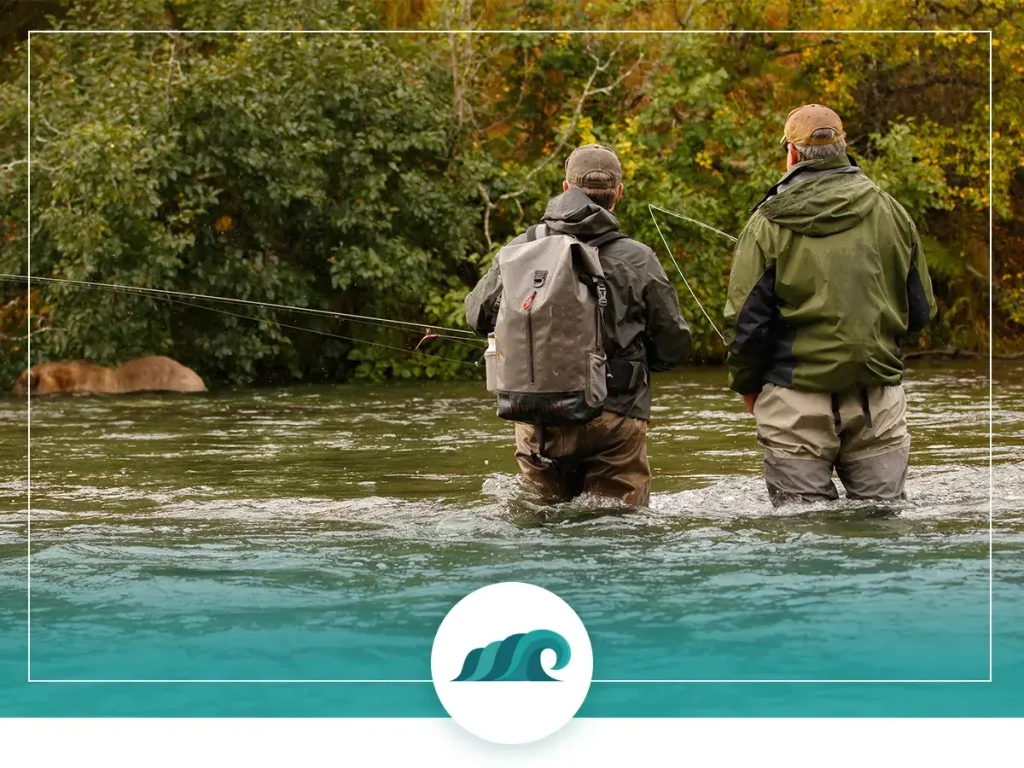
If you’ve got an emergency kit with some basic fishing gear in it, or better yet, a survival fishing kit, then you’ll have a huge headstart. A good survival fishing kit should contain a variety of hooks, line, swivels, weights, and floats, as well as a good knife and pair of fishing pliers. This gives you pretty much everything you’ll need to set up multiple lines, which will greatly increase your odds of success.
Trotline
A trotline is one of the most efficient and effective ways of scoring fish in a survival situation. It’s illegal in several states for sportfishing, and for good reason – you’ll catch a lot of fish with minimal effort.
A trotline is essentially a heavy piece of line or rope with baited fishing hooks hanging off of it suspended over a stream, river, or channel. There are many ways to set this up, but the simplest way is to fasten each end of the trotline to a tree or branch on either side of the body of water.
The main line can be made from paracord, heavy fishing line, or even a sturdy vine. Tie the leaders about 12 inches apart, and suspend them so they hang several inches down into the water. You can use almost anything you can scrounge nearby for bait such as worms, grubs, or bugs.
One of the great things about this technique is that you don’t need to constantly monitor your line. You can set it up and then do other survival tasks, coming back periodically to check on it. If you do see a fish on your line, make sure to take it off as soon as possible, and get the hook back in the water to catch more fish.
Limblines
Limblines are similar to trotlines but are basically a baited hook and a short length of line tied to a sapling or low handing branch near shore. These are another great method of passive fishing, and as long as you have enough hooks and line you can set up tons of them. One method of fine-tuning your technique is to use different baits on each limb, and then determining which bait is attracting the most fish.
Come back and check on your lines every few hours, so if you do catch something, you’ll be able to get the limbline setup again quickly.
Jug Lines
Jug lines are another variation on the passive fishing technique. Instead of a fastening your line to a limb or a suspended rope, you’ll be attaching it to a jug, soda bottle, or balloon. Obviously, you’ll need something to provide sufficient buoyancy to tie your line to, which may be difficult to find in a survival fishing situation. One thing you can do is get a pack of balloons to include in your survival kit for this purpose.
If you want a detailed explanation of jug line fishing, check out my in-depth breakdown here.
Gill Net
A gill net is one of the most effective ways of catching a large number of fish in a short amount of time. It’s essentially a small seine style net that completely blocks off a section of a stream, river, or lake. Because you’ll catch basically everything that swims through that section of water, this method is heavily regulated and illegal for recreational fishing in most states.
The net is held in place by small lead weights on the bottom section, as well as floaters on top. It typically uses diamond-shaped netting – which allows fish to swim part way through and trapping them behind their gills.
Getting yourself a gill net like the Best Glide ASE Survival Gill Net to throw in your emergency kit or bug out bag is one of the best investments you can make.
Check out this detailed video for a hands-on explanation of how to use a gill net in the field:
Angling
Of course you can also catch fish the old fashioned way by using a hand line or makeshift rod/pole or even a survival fishing rod. This can be effective when you’re not having luck with other techniques, or when you’re on the move and won’t have time to setup other methods.
All you need to make your own makeshift pole is a length of line, a hook, and something to use as a weight and float. You can tie the line to a sturdy branch to make a fishing pole, or wrap it around a small dowel, jug, or piece of wood to make a handline.
How to Survival Fish Without Gear
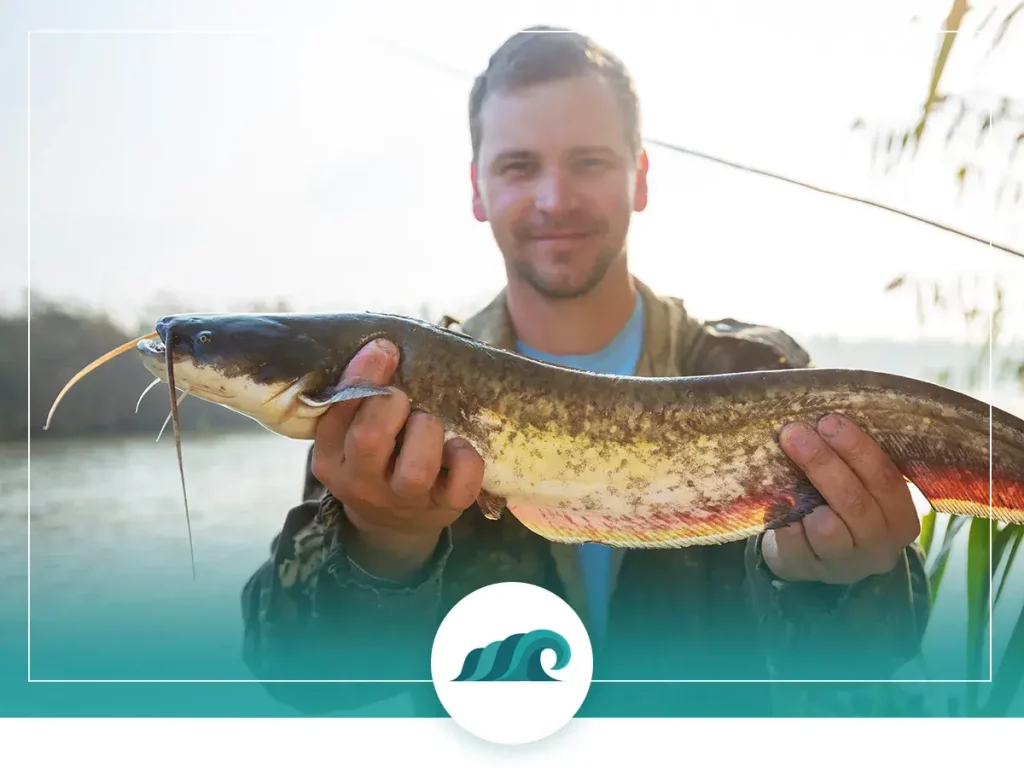
If you’re unlucky enough to be stranded without any survival fishing gear, then you’re job is going to be significantly more difficult, but you should still be able to catch fish.
Hooks can be fashioned from bones, soda can tabs, needles, safety pins, paper clips, or other bits of scrap metal. If you have a knife (hopefully you do!), you can make an old fashioned gorge or toggle hook from a piece of hardwood or bone. This is basically a short straight hook sharpened on both ends, and attached to your line by a notch or hole in the middle. The hook is surrounded by a piece of soft bait, which the fish swallows. Once the fish takes your bait, you jerk on the line, which causes the hook to turn sideways – lodging it inside the fish’s throat.
Fishing line is a little harder to fashion, but you can still use thread from clothing or paracord, dental floss, shoelaces, and possibly twisted tree bark. Lures can be made from pieces of cloth, bits of metal, feathers, or almost anything bright and flashy that will mimic insects or minnows and attract fish.
Fish Weir
A fish weir is one of the best options for catching fish without much gear. This simple but effective method has been used by Native Americans for thousands of years with much success. Think of a fish weir as a small dam along a river, stream, or in tidal waters. It works by funneling fish into a small area – allowing them to swim freely in, but not back out.
To construct a fish weir, look for a shallower part of a stream or river. Then create a makeshift dam by driving stakes into the riverbed so that fish can’t swim through them or above them. A good survival knife makes this task much easier. You want to make sure the stakes are close enough together that fish won’t be able to wriggle their way through.
After the dam is completed, you’ll need to construct the V-shaped “funnel” section of the weir. This is done by placing stakes in a V-shaped pattern with a small opening at the end facing the dam. The funnel section must be upstream from the dam section – this allows fish to find their way inside your trap, but not back out.
Weirs can also be constructed from rocks, stones, or netting. Depending on what you have on hand, you can improvise with anything that will effectively block off a section of river.
Once you’ve got several fish corralled inside your weir, you can use several methods to get them out of the water. Stunning them with a branch, spearing, or even grabbing them by hand can all work well.
Spearing Fish
Spearing fish with an improvised spear is certainly doable – but it’s by no means easy. If you’ve ever tried fishing with a pole spear, then you’ll know difficult it can be when you’ve got a proper implement. Doing it with a makeshift wooden spear makes it all the more challenging.
Successfully spearing a fish will require time, practice, and a whole lot of patience. You’re not likely to be successful on your fist attempt. However, it can work well in shallow water, and will allow you target larger fish. You’ll need to combine stalking, good aim, and pinpoint accuracy.
Keep in mind that fish are much easier to spear when you’ve got them corralled into a small area. Spearing can work very well in combination with a fish weir, or makeshift dam.
Several different spear designs can work well. A jawed spear made by splitting open the end of a cane pole or sapling will give you more opportunities to land a successful strike on a fish.
Hand Fishing (Noodling)
Hand fishing (commonly called noodling) might look a bit crazy, but can potentially be an excellent away of catching fish with nothing but your bare hands. It works well for flathead catfish, but can also work for other catfish species and suckers.
Noodling involves reaching down beneath banks, inside hollow logs, and other shoreline hiding spots that aren’t too deep. You use your arms and body to block the fish from escaping, and your hands and fingers to reach inside and grasp the fish by the mouth or gills.
Poison
Poisoning fish can be another effective survival fishing method, especially in shallow pools and slow moving streams and rivers. The goal is to allow the poison to concentrate in the water without being diluted or washed away by strong current. This method has been used by indigenous cultures all over the world for many years, from Australia to the Amazon to California.
Many different plants contain compounds that can be used as fish poisons, the most common of which are plants containing Saponins or Rotenones. These compounds are highly toxic to fish, put normally harmless to humans. Some of the most common plants in North America that can be used as fish poisons are: Black Walnut bark, Horse Chestnut fruit/twigs/buds, Devil’s Shoestring roots, and Wild cucumber seeds.
Improvised Net
An improvised net is another effective method of catching fish in the wild. If you don’t have something nearby you can use as netting, you can fashion your own out of sapling bark. There are multiple ways of doing this, but the basic technique is as follows:
Find a sapling and strip it of excess branches and leaves. Soak it water until it becomes fully soaked and pliable. At this point you can shape it into whatever frame shape you want for your net. You can go with a tennis racket shape or a letter “P” shape, whatever you prefer. Then take strips of braided sapling bark and tie them together so that your frame is now a net-like structure.
Preparing, Preserving, & Cooking Fish
One dilemma you’ll need to face when survival fishing is how to preserve your catch. Unless you’re in frigid sub-zero temperatures, you’ll need to either keep the fish you’ve caught alive or find a way to preserve them.
One way to keep fish you’ve caught alive so they don’t spoil is to create a small trench or dam near shore, similar to the fish weir described above. A makeshift stringer can also work. Once the fish is dead, you’ll need to either cook it or find a way to preserve it.
Cooking methods:
- The old fire pit method is an easy and effective way to cook just about anything. Simply impale the fish on a sharp stick and then cook it over an open fire. This will cook the fish quickly and thoroughly – resulting in a quick, tasty meal.
- If you have some form of metal or ceramic container, then you can boil the fish and make a fish broth. This is an excellent method, and gives you a nicely cooked fish plus the bonus nutritious fish broth.
- Pack the fish into an inch-thick clay coating and then bury inside a bed of coals until the clay hardens and resembles a hot brick. Then break open the clay coating and enjoy a piping hot perfectly cooked fish.
- Heat up a large flat rock in your fire until it’s fairly hot. Then use it like a frying pan to cook your fish until it’s fully cooked.
If you’re catching freshwater fish, it’s important to cook them thoroughly before consuming. Freshwater fish can contain parasites making them dangerous to eat raw.
As sometimes happens when your fishing, you might find yourself with more fish than you can manage to eat in one sitting. Preserving these for usage later on is an excellent survival strategy and can hold you over during lean times.
How to preserve fish in a survival scenario:
- Cut the fish into thin strips and skewer them on wet, thin branches. If you have access to salt, then brine the fish in a saltwater solution for a few hours before smoking. Suspend over a bed of smoldering coals and add woodchips periodically. Smoke until the fish is dry and moisture has evaporated from the flesh.
- If you’re stranded somewhere with decent sun, then you can also dry them in the wind and sunlight. This method is pretty straightforward, but you’ll need to salt the fish first to prevent mold and bacteria from spoiling the meat.

